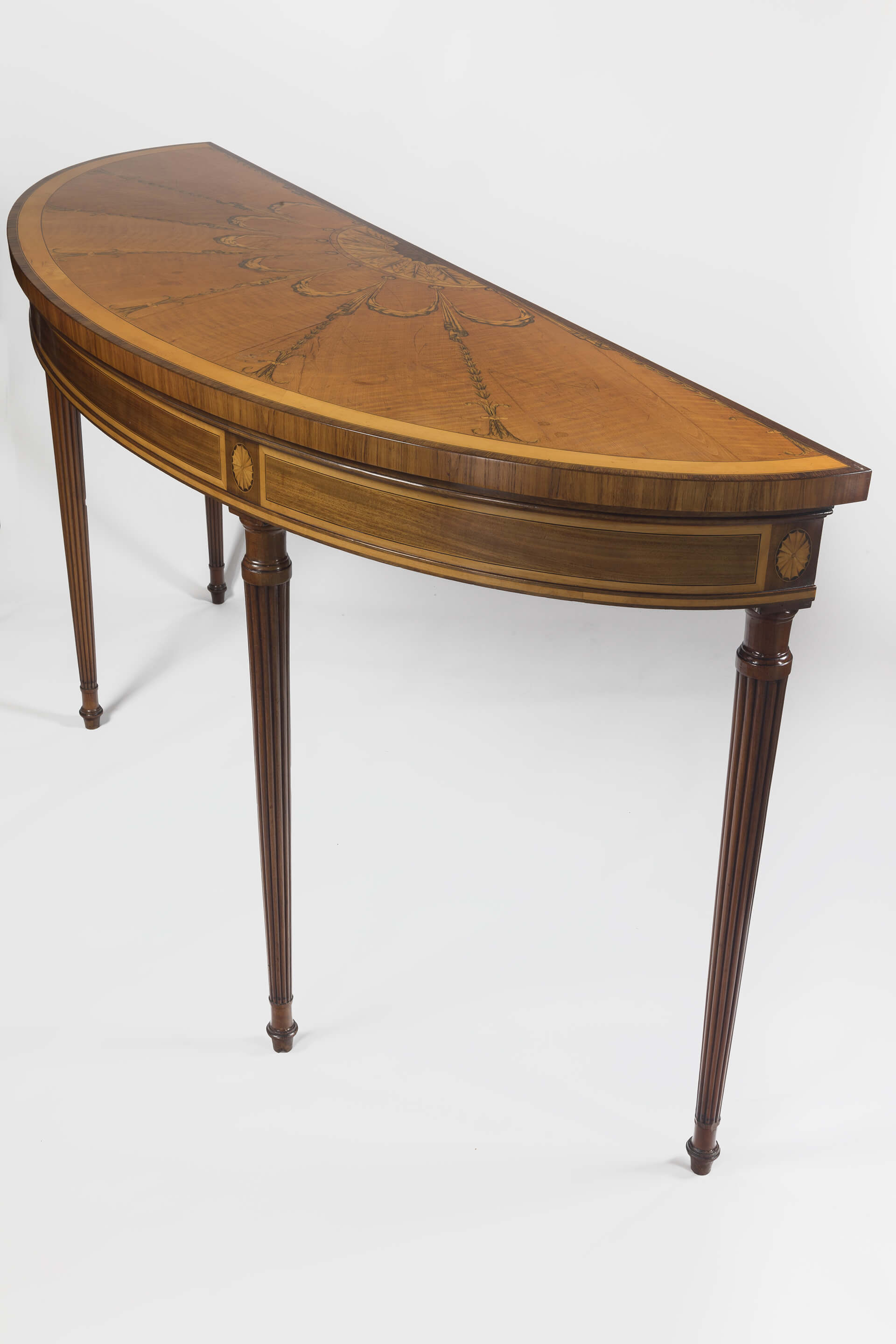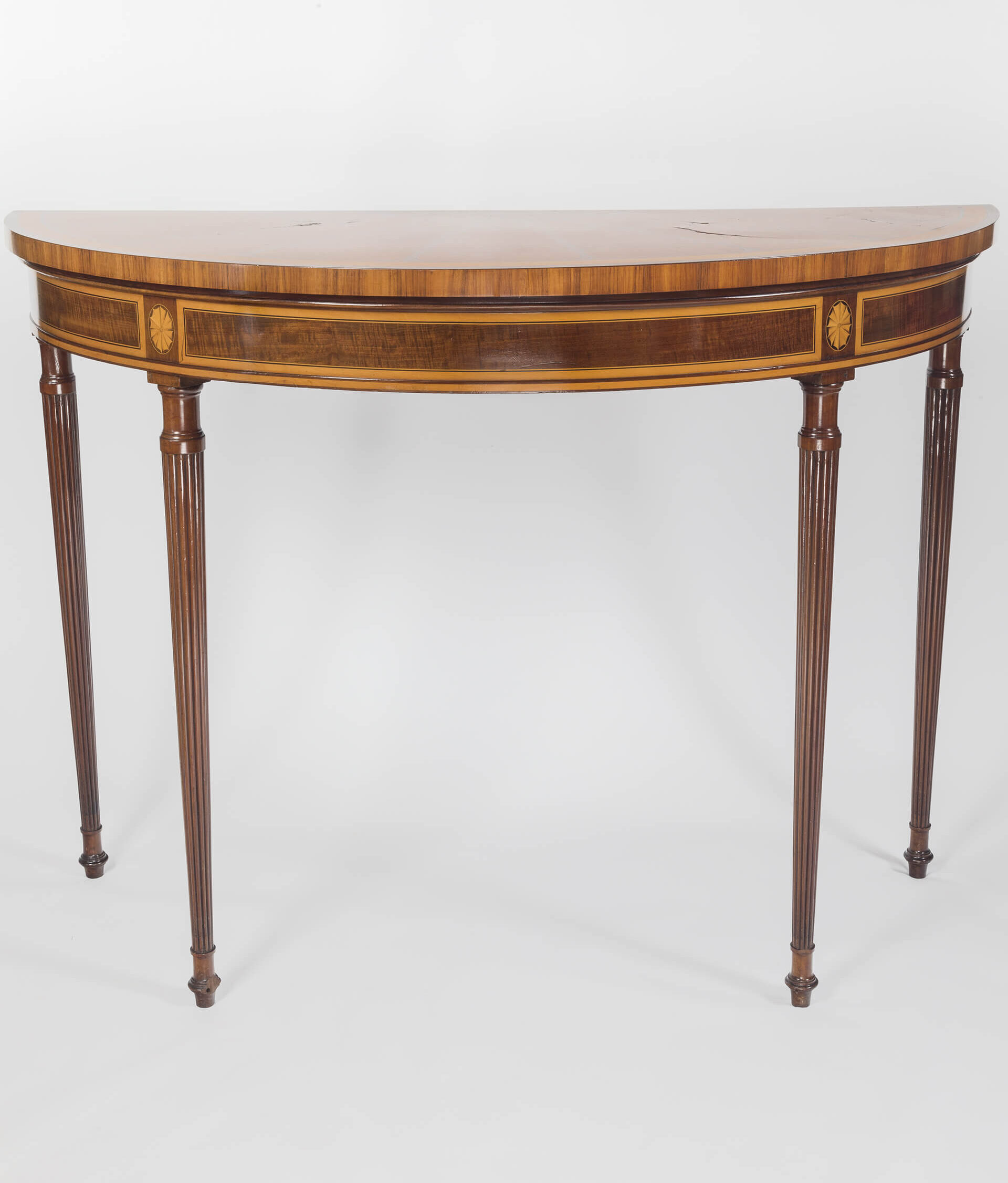‘Penelope Home’ wearing a replica chemise à la reine
Description
This dress was recreated based on Adam Callander’s painting of Paraclete, Grenada, depicting Penelope and Ninian Home in a carriage. Mahlia Palmer-Joffe researched and constructed this during her placement at Paxton House in 2021 as part of her post-graduate Art History: Dress and Textiles course at the University of Glasgow.
A woman’s layers of clothing in the late 18th century would begin with the shift, or chemise – a large, loose, shirt-shaped garment worn as the base layer of any outfit. It absorbs any dirt or sweat and could be laundered much more easily than a set of stays; it also prevents the stays rubbing against the skin.
This chemise was made using a no-waste pattern cutting technique, meaning it is made only of squares, rectangles and triangles. This was intended to use fabric as economically as possible. Gussets at the sides and underarms allowed for freer movement. All seams on the chemise are flat-felled for strength- being worn against the body and laundered constantly meant seams had to be as sturdy as possible.
The stays are based on a pattern from Norah Waugh’s Corsets and Crinolines. The pattern is taken from extant stays from c.1780, held in the V&A Museum. Cotton herringbone fabric was hand and machine stitched with synthetic whalebone and cotton binding was used instead of leather on the edges.
The pockets were suspended from ties or a belt that wrapped around the waist. Along with other undergarments and household linen, pockets were often marked with initials or the name of the owner. ‘P’ and ‘H’ (Penelope Home) are embroidered on the pockets.
The petticoat goes over the shift and stays and is used to give fullness to the skirts. Penelope’s is made from light cotton calico which is suited to the Caribbean climate.
The dress known as a chemise à la reine, is based on an example in the Musée de la Toile de Jouy in France. The chemise à la reine is a blousy, largely unstructured white dress, almost always made from white cotton muslin.
Women on plantations in the French West Indies wore simple, unstructured, white linen dresses. On becoming popular in France, the chemise à la reine was recognized to be inspired by Creole styles of dress.
Penelope married Ninian before 1770. She was probably born in the Caribbean. They were very fond of each other evidenced by the surviving letters Ninian wrote. Penelope had periods of ill health in the last few years of her life. She had quite an isolated life on Paraclete plantation. She and Ninian loved having fellow planter’s daughters to stay at Paxton House—Thomas Townsend’s two daughters came to stay at Paxton in the late 1780s, in addition to Nancy Stephens. Penelope died in Grenada at Paraclete in September 1794, possibly of cancer. Ninian and their close friend, Alexander Campbell, were with her.




